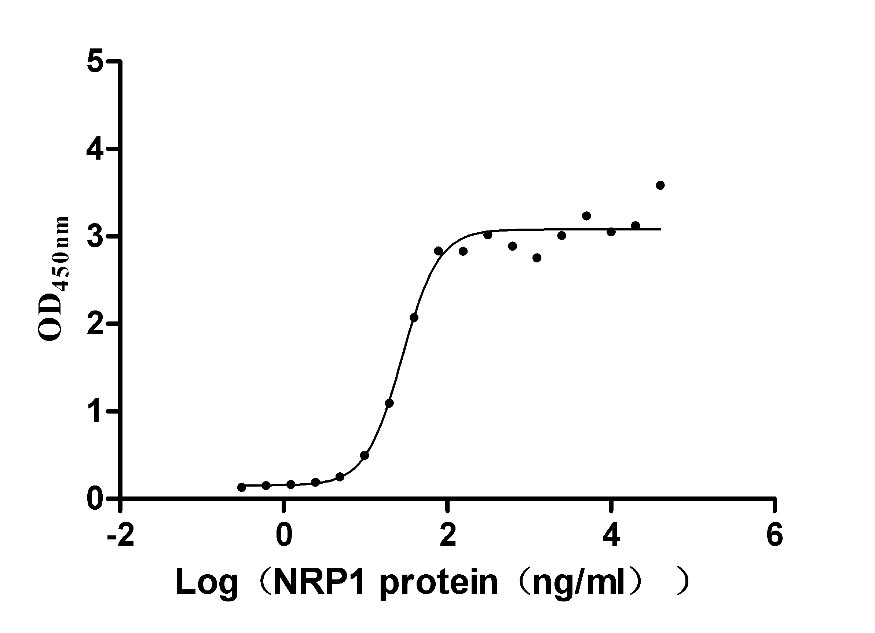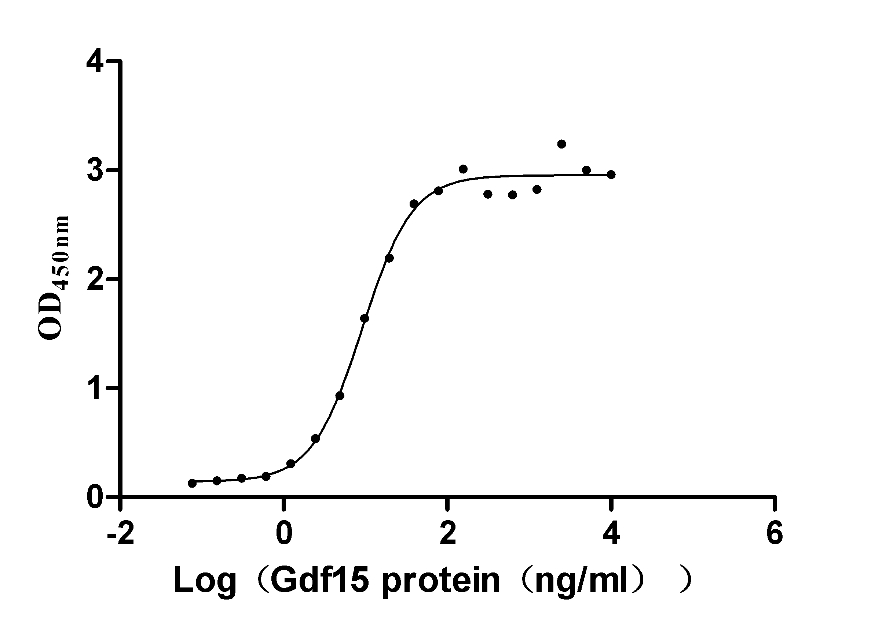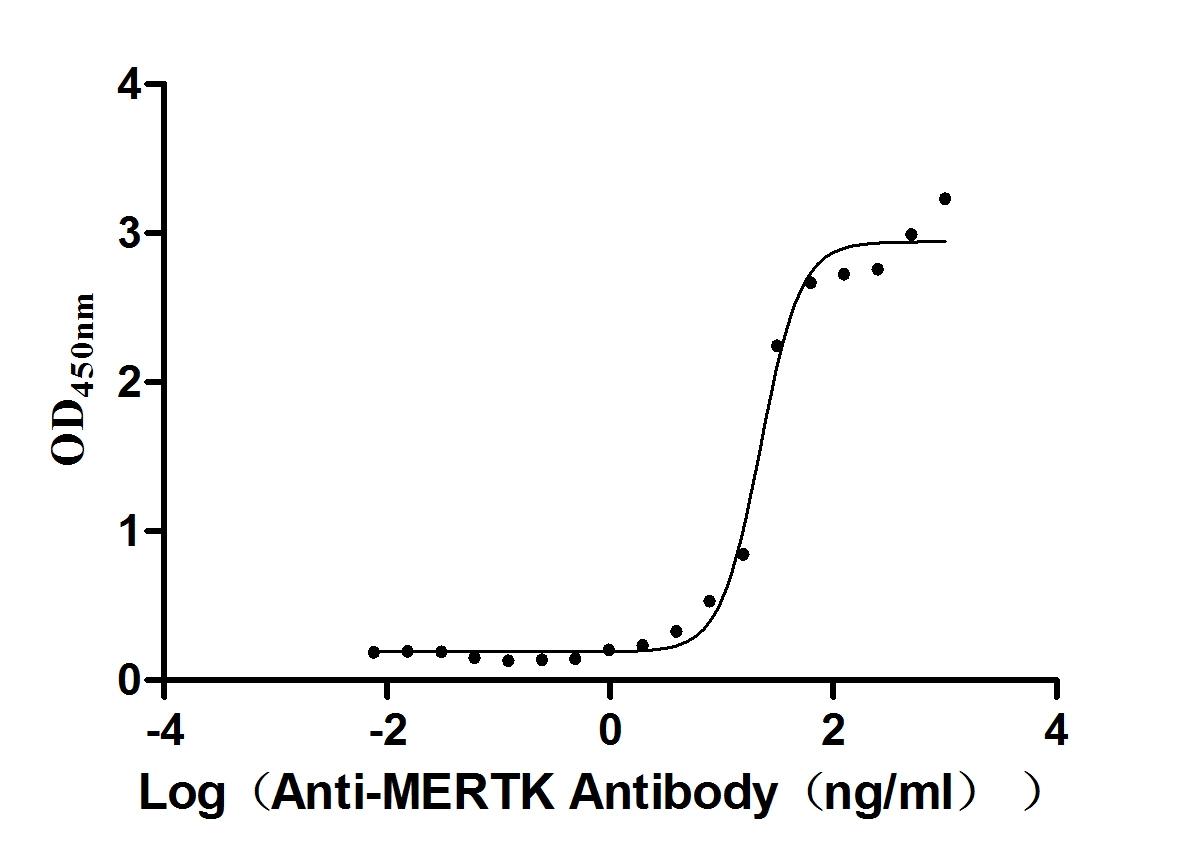Recombinant Mouse Mitogen-activated protein kinase 10 (Mapk10)
-
货号:CSB-YP013449MO
-
规格:
-
来源:Yeast
-
其他:
-
货号:CSB-EP013449MO
-
规格:
-
来源:E.coli
-
其他:
-
货号:CSB-EP013449MO-B
-
规格:
-
来源:E.coli
-
共轭:Avi-tag Biotinylated
E. coli biotin ligase (BirA) is highly specific in covalently attaching biotin to the 15 amino acid AviTag peptide. This recombinant protein was biotinylated in vivo by AviTag-BirA technology, which method is BriA catalyzes amide linkage between the biotin and the specific lysine of the AviTag.
-
其他:
-
货号:CSB-BP013449MO
-
规格:
-
来源:Baculovirus
-
其他:
-
货号:CSB-MP013449MO
-
规格:
-
来源:Mammalian cell
-
其他:
产品详情
-
纯度:>85% (SDS-PAGE)
-
基因名:
-
Uniprot No.:
-
别名:Mapk10; Jnk3; Prkm10; Serk2Mitogen-activated protein kinase 10; MAP kinase 10; MAPK 10; EC 2.7.11.24; MAP kinase p49 3F12; Stress-activated protein kinase JNK3; c-Jun N-terminal kinase 3
-
种属:Mus musculus (Mouse)
-
蛋白长度:full length protein
-
表达区域:1-464
-
氨基酸序列MSLHFLYYCS EPTLDVKIAF CQGFDKHVDV SSIAKHYNMS KSKVDNQFYS VEVGDSTFTV LKRYQNLKPI GSGAQGIVCA AYDAVLDRNV AIKKLSRPFQ NQTHAKRAYR ELVLMKCVNH KNIISLLNVF TPQKTLEEFQ DVYLVMELMD ANLCQVIQME LDHERMSYLL YQMLCGIKHL HSAGIIHRDL KPSNIVVKSD CTLKILDFGL ARTAGTSFMM TPYVVTRYYR APEVILGMGY KENVDIWSVG CIMGEMVRHK ILFPGRSYID QWNKVIEQLG TPCPEFMKKL QPTVRNYVEN RPKYAGLTFP KLFPDSLFPA DSEHNKLKAS QARDLLSKML VIDPVKRISV DDALQHPYIN VWYDPAEVEA PPPQIYDKQL DEREHTIEEW KELIYKEVMN SEEKTKNGVV KSQPSPSGAA VNSSESLPPS SAVNDISSMS TDQTLASDTD SSLEASAGPL GCCR
-
蛋白标签:Tag type will be determined during the manufacturing process.
The tag type will be determined during production process. If you have specified tag type, please tell us and we will develop the specified tag preferentially. -
产品提供形式:Lyophilized powder
Note: We will preferentially ship the format that we have in stock, however, if you have any special requirement for the format, please remark your requirement when placing the order, we will prepare according to your demand. -
复溶:We recommend that this vial be briefly centrifuged prior to opening to bring the contents to the bottom. Please reconstitute protein in deionized sterile water to a concentration of 0.1-1.0 mg/mL.We recommend to add 5-50% of glycerol (final concentration) and aliquot for long-term storage at -20℃/-80℃. Our default final concentration of glycerol is 50%. Customers could use it as reference.
-
储存条件:Store at -20°C/-80°C upon receipt, aliquoting is necessary for mutiple use. Avoid repeated freeze-thaw cycles.
-
保质期:The shelf life is related to many factors, storage state, buffer ingredients, storage temperature and the stability of the protein itself.
Generally, the shelf life of liquid form is 6 months at -20°C/-80°C. The shelf life of lyophilized form is 12 months at -20°C/-80°C. -
货期:Delivery time may differ from different purchasing way or location, please kindly consult your local distributors for specific delivery time.Note: All of our proteins are default shipped with normal blue ice packs, if you request to ship with dry ice, please communicate with us in advance and extra fees will be charged.
-
注意事项:Repeated freezing and thawing is not recommended. Store working aliquots at 4°C for up to one week.
-
Datasheet :Please contact us to get it.
靶点详情
-
功能:Serine/threonine-protein kinase involved in various processes such as neuronal proliferation, differentiation, migration and programmed cell death. Extracellular stimuli such as proinflammatory cytokines or physical stress stimulate the stress-activated protein kinase/c-Jun N-terminal kinase (SAP/JNK) signaling pathway. In this cascade, two dual specificity kinases MAP2K4/MKK4 and MAP2K7/MKK7 phosphorylate and activate MAPK10/JNK3. In turn, MAPK10/JNK3 phosphorylates a number of transcription factors, primarily components of AP-1 such as JUN and ATF2 and thus regulates AP-1 transcriptional activity. Plays regulatory roles in the signaling pathways during neuronal apoptosis. Phosphorylates the neuronal microtubule regulator STMN2. Acts in the regulation of the amyloid-beta precursor protein/APP signaling during neuronal differentiation by phosphorylating APP. Participates also in neurite growth in spiral ganglion neurons. Phosphorylates the CLOCK-ARNTL/BMAL1 heterodimer and plays a role in the photic regulation of the circadian clock. Phosphorylates JUND and this phosphorylation is inhibited in the presence of MEN1.
-
基因功能参考文献:
- JNK3 therefore provides a mechanism that contributes to homeostatic regulation of energy balance in response to metabolic stress. PMID: 26910012
- Genetic inhibition of JNK pathway in vivo by Jnk3 knockout results in amelioration of spinal muscular atrophy phenotype PMID: 26423457
- Rotenone induces dopamine neuron death through a series of sequential events including microtubule destabilization, JNK3 activation, VMAT2 inhibition, accumulation of cytosolic dopamine, and generation of ROS. PMID: 25496994
- the data on anxiety, exploration and learning indicate that JNK1 ko mice displayed a stronger explorative behaviour and that knockout of JNK2 or JNK3 PMID: 23428746
- JNK3 signaling is a major early pathway triggering retinal ganglion cell (RGC) death after axonal injury and may directly link axon injury to transcriptional activity that controls RGC death. PMID: 22353563
- Deletion of JNK3 from Alzheimer (AD) mice results in a dramatic reduction in Abeta42 levels, overall plaque loads, and increased neuronal number and improved cognition, revealing AD as a metabolic disease under tight control by JNK3. PMID: 22958823
- Mice deficient for neuron-specific isoform JNK3 have altered behavioural rhythms, with longer free-running period and compromised phase shifts to light. PMID: 22441692
- Overall, our results show the transcriptional regulation of the MAPK pathway and the essential role of JNK in Japanese Encephalitis Virus-induced apoptosis in neuroblastoma cells. PMID: 21320173
- This study indicated that the activation of PI3K/AKT pathway in hippocampus because of the increase in pik3cb transcription and that this mechanism is specifically related to the lack of Jnk3. PMID: 21255018
- JNK2 and JNK3 are critically involved in stress-induced deficit of contextual fear, while JNK1 mainly regulates baseline learning in this behavioral task. PMID: 20926661
- Results demonstrate that p75NTR-mediated activation of JNK3 is required for up-regulation of TACE, which promotes receptor proteolysis, leading to prolonged activation of JNK3 and subsequent apoptosis in sympathetic neurons. PMID: 20421303
- Data show that neuritogenesis is delayed by lack of JNK2 and JNK3, but not JNK1. PMID: 20534829
- JNK3 in neurons has a critical role in ischemic apoptosis PMID: 14657393
- JNKs can mediate death independently of c-Jun PMID: 15528206
- interaction of free arrestins with JNK3 and Mdm2 and their ability to regulate subcellular localization of these proteins may play an important role in the survival of photoreceptors and other neurons PMID: 16737965
- Stimulation of ceramide biosynthesis seems to be under control of JNK3 signaling PMID: 17609208
- MyD88-5 is distinct from other MyD88s in that MyD88-5 is preferentially expressed in neurons, colocalizes in part with mitochondria and JNK3, and regulates neuronal death. PMID: 17724133
- JNK2/3 double deficiency blocks death due to retinoblastoma loss in both the PNS and CNS and In the medulla region of the hindbrain in the CNS, JNK2/3 deficiency blocks p53 activation. PMID: 17984095
- data identify JNK3 as a critical mediator of pathogenic Htt (polyQ-Htt)toxicity and provide a molecular basis for polyQ-Htt-induced inhibition of fast axonal transport. PMID: 19525941
- The activation of SAPK/JNK in basket cell "pinceaux" may be a consequence of altered functionality of Purkinje cells and may represent an attempt of basket cells of synaptic remodeling. PMID: 19703431
显示更多
收起更多
-
亚细胞定位:Cytoplasm. Membrane; Lipid-anchor. Nucleus. Mitochondrion.
-
蛋白家族:Protein kinase superfamily, CMGC Ser/Thr protein kinase family, MAP kinase subfamily
-
组织特异性:Brain (at protein level). Expressed specifically in neurons of the hippocampus, cortex, cerebellum, brainstem, and spinal cord. Seems to be also found in testis, and very weakly in the heart.
-
数据库链接:
KEGG: mmu:26414
STRING: 10090.ENSMUSP00000108468
UniGene: Mm.39253
Most popular with customers
-
Recombinant Human Neuropilin-1 (NRP1) (Active)
Express system: Mammalian cell
Species: Homo sapiens (Human)
-
Recombinant Mouse GDNF family receptor alpha-like (Gfral), partial (Active)
Express system: Mammalian cell
Species: Mus musculus (Mouse)
-
Recombinant Human Cytokine receptor common subunit beta (CSF2RB), partial (Active)
Express system: Mammalian cell
Species: Homo sapiens (Human)
-
Recombinant Mouse Tyrosine-protein kinase Mer (Mertk), partial (Active)
Express system: Mammalian cell
Species: Mus musculus (Mouse)
-
Express system: Mammalian cell
Species: Homo sapiens (Human)
-
Recombinant Human Microtubule-associated protein tau (MAPT) (Active)
Express system: Mammalian cell
Species: Homo sapiens (Human)
-
Recombinant Human Complement component C1q receptor (CD93), partial (Active)
Express system: Mammalian cell
Species: Homo sapiens (Human)
-
Express system: Mammalian cell
Species: Homo sapiens (Human)







-AC1.jpg)












